Even when full-blown deliberative democracy is not possible in complex societies, we can strive for a more modest goal: “civic coproduction”, which concerns the many grassroots initiatives that we now see in cities and landscapes. Even where the complex needs and desires of diverse publics must be conjugated with scarce resources, people and civil society are participating and making a difference.
Conventional wisdom tells us that deliberative democracy works best at local scales thanks to superior and immediate access to decision-makers, the tightness of feedback loops for citizens, deciders, and third parties (expressed by the notion that disgruntled citizens will “vote with their feet”), and the importance of local places to self-identity [1]. We generally want to believe this, perhaps foremost because it supports our very sense of self as individuals in existential terms—one might argue that if we can effect change in our immediate settings, then we must exist in good (meaningful) ways. To influence decisions is to both have agency and to exercise that agency in real terms. This is certainly more appealing than to see ourselves as mere cogs in machinic systems that will continue operating regardless of anything we do as individuals. It is also appealing because it fits with broader arguments about social justice and what Henri Lefebvre so usefully declared in 1968 as “the right to the city”. It is a theme that permeates many of the thoughtful pieces on TNOC, such as Diana Wiesner’s call for meaningful involvement to ensure that sustainability and resilience come from the soul, the determination expressed by P.K. Das in his call for reclaiming participation as an inalienable right in urban planning and design, and Ben Hecht’s suggestions for how we can rebuild institutions to create a “new civic infrastructure”. The imperative to participate is so compelling that Hannah Arendt (1958) defined it as a fundamental quality of the human condition. Political philosophers talk about how we can enact this imperative through the principle of subsidiarity—the work of bringing decision-making to the nearest or most immediate scales of governance in human affairs [2].
The issue is this, however: where it is presumably easiest to engage in deliberative democracy, it also seems most challenging. We have seen increasing evidence of voter apathy (suggesting citizen ambivalence) at the local level in recent decades [3]. Perhaps this is because local governments often lack resources and the powers of taxation to generate the budgets needed to do substantial work—for instance, to build and maintain most types of infrastructure—and thus the big decisions tend to be taken at state/provincial or higher levels. Compounding the problem is that the resources needed for meaningful public engagement are scarce.
How, then, do we promote civic coproduction beyond “town-hall” meetings, which are often dull and disenchanting, and to which only some citizen-participants have effective access? This means getting beyond participatory moments that exist only to satisfy statutory requirements for public involvement without having real impacts on policy or planning. All of this is compounded by the paramountcy doctrine in federal systems such as Canada and the United States—whereby higher levels of government prevail over local institutions—and which can therefore be seen as thwarting local democracy [4]. One might even worry about the high levels of residential mobility observed in many OECD countries (with many people moving house so often that they have few opportunities to get involved and/or to have credibility as local stakeholders) or the predominantly transactional ways in which many citizens interact with their local governments (e.g., simply using local services such as public libraries, rather than active community-building).
Participation matters. It seems easiest at the local scale, yet forces conspire to make it difficult, and people are understandably ambivalent or even cynical. This is a depressing set of observations…
In response, I want to assert (both optimistically and pragmatically) that even if full-blown deliberative democracy is not possible in complex societies, we can strive for a more modest goal, which I call “civic coproduction”. My main premise concerns the many grassroots initiatives that we now see in cities and landscapes. Even where the complex needs and desires of diverse publics must be conjugated with scarce resources for infrastructure, limited space, and time constraints for many of the protagonists, people are engaging with their local contexts and making a difference, and change is afoot.
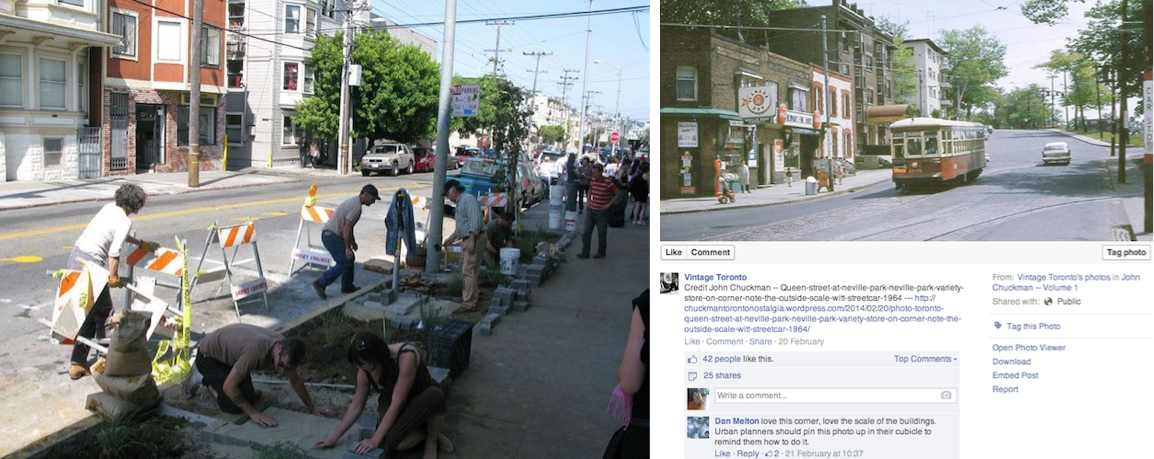
I present three sets of ideas here. First, I briefly comment on the importance of civic coproduction in the light of certain hesitations and critiques that we find in scholarly debates. Second, I highlight the importance of civil-society organisations in this coproduction. Finally, I present a few suggestions on how (and where) to make civic coproduction work that have revealed their importance through my 15 years of empirical action-research in urban, suburban, and periurban contexts. Mixed into the narrative are various thoughts and queries coupled with theoretical arguments on how to structure and maintain civic coproduction in terms of the practical (and admittedly instrumental) work I do in urban design and landscape planning.
Contrarianism, conflict, and collaboration
Collaborative planning and design remains a holy grail of sorts in liberal democracies. Since the 1960s, theorists and advocates have sought to develop practical methods and to articulate useful strategies in ways that have shifted the very mission of professional practitioners in architecture, planning, and urban design. From Sherry Arnstein’s seminal 1969 work on a “ladder of citizen participation” to Joan Iverson Nassauer’s 2015 commentary on the importance of embracing landscape as a “medium for synthesis” in civic engagement (of both knowledge and potential interventions), debates have raged in exciting ways on who does what and how. An enduring problem is how to ensure that cheerful contrarianism (whereby citizens question the state) does not default to enduring conflict or what Lucien Kroll (1984) called “anarchitecture”—tiresome patterns of angry confrontation that became typical in the 1960s and 1970s, as Richard Sennett described in The fall of public man (1977: 294):
… planners have largely given up hope on properly designing the city as a whole—because they have come to recognize both their own limits of knowledge and their lack of political clout. They instead have enshrined working at a community level, against whatever interests of money and politics dominate the shaping of the whole city. … today’s urbanist conceives of community against the city.
We now see various efforts to reconcile the two solitudes that Sennett identified. This is more important than ever because metropolitan regions are defined now perhaps more than ever in history by the diversity of the publics to whom they are home, adding new layers of complexity to the daunting work of engaging citizens and other stakeholders in meaningful ways; having found full expression in public law, policy planning, and governance writ large, the imperative to coproduce in meaningful ways is increasingly central to the work of urban design and landscape planning [5]. Collaborative design for resilience is recognised as vital as urgent concerns over the effects of climate change, the ageing population, and worn-out core physical infrastructure (CPI) now dominate public debate in many OECD countries, linking disparate debates over the interdependence of nature and culture in cities [6].
Getting people to participate is easier to say than to do. For one thing, public meetings are dull, difficult to attend, and often treated by local officials as necessary evils. As John Forester (1998) noted 20 years ago, they have few clear or robust ways of capturing the wealth of ideas and concerns that find expression and even fewer mechanisms for cultivating trust and civic learning among participants. Even where participation occurs, expressions of dissent can be obscured through what Macleod (2013) describes tending to forge a disingenuous “post-political consensus”. In short, there is a continuing unmet need for meaningful exchange, for reasons of accountability, the legitimacy of public decision-making, and efficacy in governance.

One intriguing manifestation of the city as “the hope of democracy” (Magnusson, 2002) is what we often call the third sector (thus named to situate civil society on an even footing with the public and the private sectors). This includes small local groups that mobilise to deal with neighbourhood-specific concerns (see e.g. Kaliski, 2009), broader alliances that arise in response to megaprojects or policy shifts (see e.g. Bornstein, 2010), and trans-border movements that form global assemblages of advocacy for change (see e.g. Sassen, 2008). One might think of initiatives such as guerrilla gardening, which abounds in my own city of Montréal and in many other places (see the thought-provoking piece on this topic by Pippin Anderson as well as Douglas, 2015; Mikadze, 2014; Zukin, 2010) or the general wave of “popup” and “tactical” initiatives that have corresponded with the Occupy movement, many of which are consistent with Marshall Berman’s now-classic (1986) admonition that we “take it to the streets”—as hinted at by Jack Travis in his piece on resistance, education, and the “just city” (cf. Fainstein, 2010).
Should these events and movements be seen as marking a new sort of urban crisis of confidence vis-à-vis the state? Perhaps their proliferation is linked to the frustration of those who doubt the efficacy of local government—many of whom, like Jane Jacobs, might have an anarchist-libertarian streak that is difficult to satisfy regardless of how much inclusiveness or humility might be demonstrated by local government. Perhaps, too, they are symptoms of the decline of the so-called “welfare state” in liberal democracies—a pattern of state disinvestment in civic affairs since the 1980s—an idea that has led some critics to argue that partnerships between local government and non-governmental organisations are part of a sinister plan to force people to fend for themselves as much as possible in society (Rosol, 2010; Wekerle, 2004). Another perspective comes from Susan Fainstein (1999, 2010), whose work on the just city had led her to conclude that healthy, democratic cities are defined by a vibrant third sector, and that we need to nurture what she calls “counterinstitutions”:
Urban citizen participation, as it is conducted now, mainly involves participants demanding marginal changes in the status quo or benefits that respond to their narrowly-defined interests. Movement towards a normative vision of the city requires the development of counterinstitutions capable of reframing issues in broad terms and of mobilizing organizational and financial resources to fight for their aims. … The inherently divisive character of identity politics cuts against the building of such [counter]institutions and, therefore, can only be self-defeating.
—Fainstein, 1999: 268
Fainstein’s conclusion can be usefully juxtaposed with a new set of arguments made by planning theorist Robert Beauregard (2018: 90-101), highlighting the important tension between democracy and oligarchy in cities in a recently-published book. He suggests that five basic categories of counterinstitutions can be observed in the history of the contemporary city:
- Those formed around common interests of culture and social practice, including religious groups, sport clubs, and hobby-focused associations
- Unions, labour organisations, and other collectives or coalitions that form around common struggles
- Interest-focused associations such as residential ratepayer associations and merchant alliances (Business Improvement Districts, for instance)
- Formal and informal place-based organisations, some of which are state-supported on a continuing basis, others arising on an ad-hoc basis
- Advocacy groups, whether issue-specific or broader social movements
Some categories are more active in coproduction, while others get involved only occasionally when situations demand citizen mobilisation. Regardless, Beauregard and Fainstein are among many observers who remind us of what local actors have been saying for decades: third-sector counterinstitutions cannot be seen as ephemeral responses to failures of the state and/or the market. Rather, they must be (and indeed are) recognised as both continuous and integral to city life, and thus in the very nature of cities. To this conclusion must be added something especially important about that history has shown about why collaboration and its procedural bosom-buddy of compromise matter in liberal democracies. Even if they aren’t easy in practice, as brilliantly argued by Daniel Weinstock (2013), they are often morally necessary because of the shortfalls that unavoidably separate democratic institutions from democratic ideals.
What I call “civic coproduction” is thus based on a recognition that what we want in terms of public participation must be tempered by what is possible.
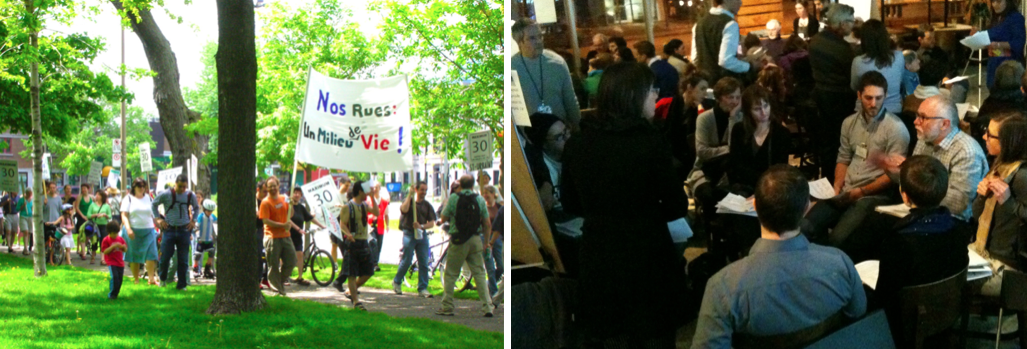
Making civic coproduction work: A few hot tips for practitioners and citizens
Clicking through the dozens of inspiring pieces here on The Nature of Cities will reveal the importance of counterinstitutions in ensuring that cities are healthy, democratic, sustainable, and resilient places. The many case studies that have been curated here tell us a great deal about how positive change can be effected in large and small metropolitan landscapes. They often also showcase the happy possibilities that arise when counterinstitutions and local officials seek to collaborate, even if this is not what was originally intended by either party!
To this rich array, I would now like to add thoughts on how we can practice civic coproduction based on my own experiences. My three suggestions are intended to help citizens and practitioners to move from rhetoric (including philosophical bickering about how many angels might deliberatively dance on the head of a pin) to action. They’re also informed by two core claims in debates on ecological design. The first is articulated by Sim van der Ryn and Stuart Cowan (2007), who call upon all of us—especially credential-bedecked “experts”—to recognise that everyone is a designer. The second comes from Michael Hough (1990), who reminds us to start where it’s easiest.
Focus on tangible things: It is hugely important to work on the physical stuff of landscape. Perhaps this comes from professional self-interest, but one of the joys of working professionally on architecture, landscape architecture, urban design, and hard infrastructure is that people can relate easily to things that have material expression, and in ways that are even more palpable than with art—often galvanising local publics into action. Sometimes, as in the case of a city-building project intended to improve the quality of tramway service in Toronto, people get involved because they fear uncertainty and change, but even engagement borne of frustration is better than none at all. In my experience, it’s regularly been the case that immaterial goals such as housing affordability are frustrating for diverse publics to discuss beyond the broad, fuzzy conviction. More engagingly, we can debate how different housing types might be more accessible to certain individuals or households will require place-specific examples with which participants are familiar. Similar sorts of questions have been discussed by Senbel & Church (2011) and Forsyth et al. (2010).
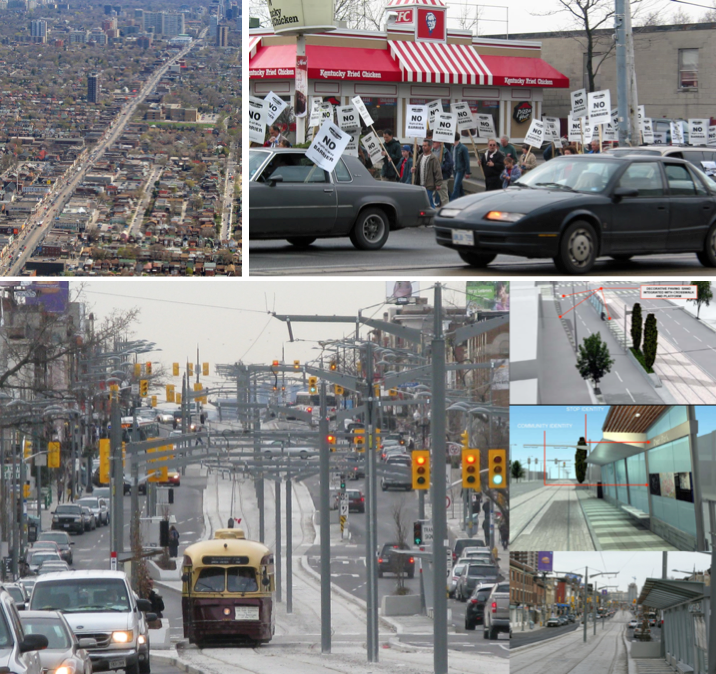
Seek places where transformation is already happening: We should seize the challenges, tensions, and opportunities of reurbanisation to engage diverse publics. I’m referring here to the processes of transformation that reshape existing landscapes—where a defunct shopping mall or disused industrial precinct gets converted to a dense, mixed-use complex of transit-supportive housing, shops, workplaces, and pedestrian-oriented, public space, as seen in projects undertaken in San Diego and Stockholm. These are not easy projects to tackle, because change is difficult for most people, and familiar landscapes—with all the as proverbial blood, sweat, and tears they represent—demand special attention.
I’ve written elsewhere about this as reurbanism, whereby cities in North America and elsewhere mature into more complex, thickly-layered assemblages, and the surprising collisions of capital, the state, and third-sector actors that result. These collisions engender new opportunities for civil society and for professional practitioners. In Montréal, we are actively discussing the need for a new kind of professional actor: the specialist in coproduction who can link institutions with diverse publics on project-specific debates (Bherer et al. 2015).
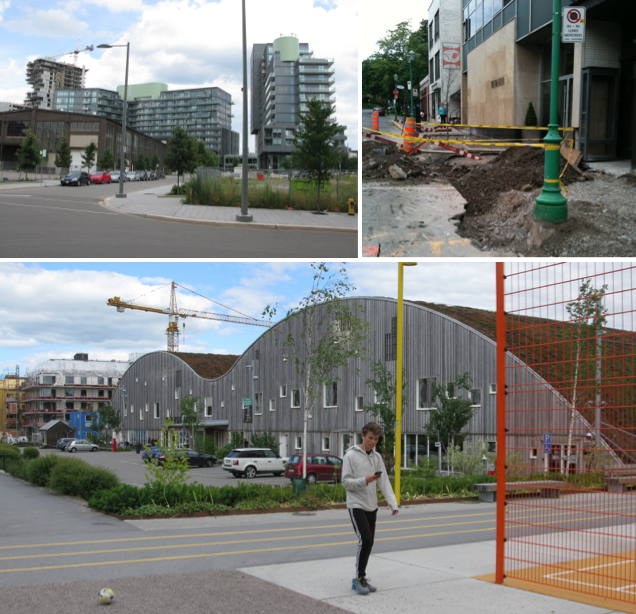
Narrow the scope: Small is beautiful when it comes to broad participation. The bigger the scale of the project, the harder it is for people to relate to for the purposes of discussion and debate. In Montréal, we’ve had our greatest success on engaging diverse publics by focusing on smaller “pieces” of the city, such as a five-block stretch of Saint-Viateur, a beloved local main street in the lively Montréal’s neighbourhood known (in a fine example of the wonderful franglais mashup we enjoy in this multilingual city) as Le Mile-End. Larger pieces, such as the 18-ha site in a neighbourhood adjacent to Le Mile-End that was the focus of a long-term participatory project, simply tend to baffle many participants and force them to retreat into vagueness and ambivalence when specific interventions get suggested.
When I say small, I mean small in physical terms, but also in terms of the imaginary. A place with a clear and discrete albeit complex identity is easier for people to talk about than spaces that have a huge array of roles, qualities, and narratives associated with them.
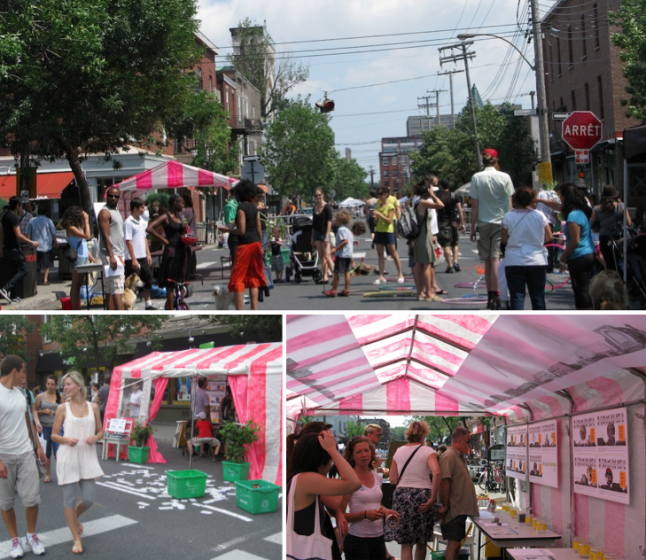
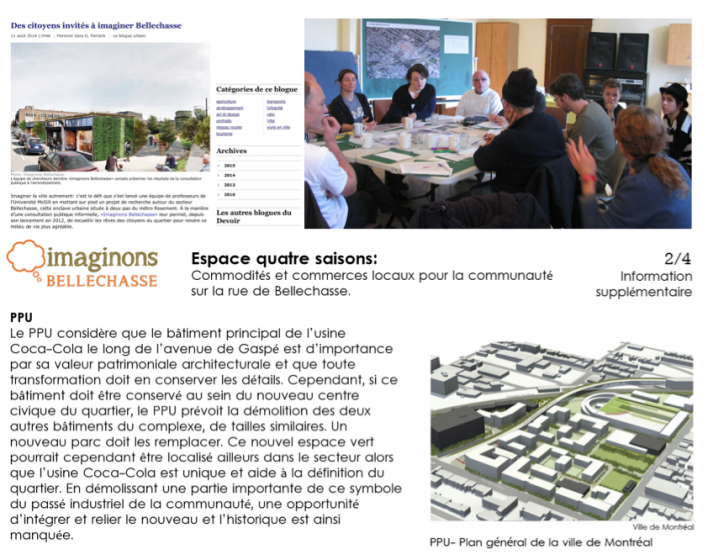
* * *
In closing, I want to add a final point in the interest of procedural pragmatism. Not all processes need to be subject to civic coproduction. Many acts and events can be left to experts. Think of it this way: I don’t want to participate (except as the patient) in an invasive medical procedure because I have confidence in the experts who have focused on that in their careers. I’ll be proactive about wellness, but I don’t want to talk about how to hold the scalpel if surgery is required. Examples include the everyday maintenance of hard infrastructure or changes to snow-removal procedures in Nordic “winter cities” such as Montréal. Rather than soliciting general participation, specially-convened and duly-democratic committees of “citizen experts”—sometimes called “ward councils” or “neighbourhood councils”, as discussed by Kong (2010) and Parlow (2008), respectively—can meet many of the needs for input from diverse publics.
We have lots of work to do in terms of progressive reform if we are to make civic coproduction the norm in cities, but we are starting from strong positions when we work with established places where people have lived, worked, and played for generations. Even if cynics suggest that public participation is a democratic ideal that we cannot achieve in a world driven hard by politics and capital, I remain convinced that civic coproduction is in the very nature of cities.
Nik Luka
Montreal & Uppsala
Acknowledgements:
This piece is based on empirical work funded by the Social Sciences and Humanities Research Council of Canada, the Fonds de recherche du Québec (Société et Culture), and NordForsk. The ideas presented here were presented at a symposium on Landscape Planning and Governance held in Uppsala in June 2018 with researchers from the Institutionen för stad och land at Sveriges Lantbruksuniversitet (Department of Urban and Rural Development, Swedish University of Agricultural Sciences) and the Institutet för bostads- och urbanforskning at Uppsala Universitet (Institute for Housing and Urban Research, Uppsala University). Individual work is often itself the byproduct of deliberative coproduction; in this case, I must thank Marie-Hélène Armand, Jean Beaudoin, Katherine Berton, Laurence Bherer, Martin Blanchard, Lisa Bornstein, Andrew Butler, Stuart Candy, Simon Chauvette, Andréa Cohen, Anne Cormier, Jaimie Cudmore, Carole Després, Anurag Dhir, Jayne Engle, Cynthia Farina, Isabelle Feillou, Alanna Felt, Eve Finley, Isabelle Gaudette, Nils Hertting, Michael Jemtrud, Anne Juillet, Mari Kågström, Hoi L. Kong, Jill Lance, Margo Legault, Becky Lentz, David Maddox, Chelsea Medd, Irene Molina, Christine Mondor, Jimmy Paquet-Cormier, Itai Peleg, Raquel Peñalosa, Anna Persson, Johan Pries, Alphie Primeau, Gary Purcell, Mattias Qviström, Luc Rabouin, Kenneth Reardon, Érick Rivard, Pamela Robinson, Annie Rochette, Margaux Ruellan, Jessica Ruglis, Daniel Schwirtz, Maged Senbel, Renée Sieber, Geneviève Vachon, Darren Veres, and Daniel Weinstock.
Notes:
- See Bherer et al. (2010, 2015), Boudreau (2003), Magnusson (2002), and Paddison et al. (2008).
- See Collier (1997), Fung (2003), Inwood (2005), Kong (2015), Paddison et al. (2008), and Walker & Belanger (2013).
- Notable empirical work includes Ghajnal & Lewis (2003) and Holbrook & Weinschenk (2014).
- On paramountcy, see Inwood (2005) and Kong (2014).
- On multicultural metropolitanism, see Agyeman & Erickson (2012), Lee Uyesugi & Shipley (2005), Macedo (2000), Sandercock (1998), Walker & Belanger (2013), and Watson (2006); on participation and public law, see Bherer (2010), Fennell (2013), Fischer (2006), Fung (2003), Kong et al. (2010, 2014, 2017), and Paddison et al. (2008); on emerging modes of coproduction in metropolitan landscapes, see Forester (1998, 1999), Healey (2002), Hou (2011), Luka et al. (2015), Nassauer (2015), North (2013), Rabouin (2009), Scott et al. (2013), and van der Ryn & Cowan (2007).
- This is a burgeoning area of debate; notable contributions include Collier (1997), Kaliski (2009), Larsen (2015), Lister (2015), MacLeod (2013), North (2013), Radywyla & Biggs (2013), Rosol (2010), Scott et al. (2013), Steiner (2014), and van der Ryn & Cowan (2007).
Works cited:
Agyeman, J., & Erickson, J. S. (2012). Culture, recognition and the negotiation of difference: some thoughts on cultural competency in planning education. Journal of Planning Education and Research, 32(3), 358-366.
Arendt, H. (1958). The human condition. Chicago: University of Chicago Press.
Arnstein, S. R. (1969). A ladder of citizen participation. Journal of the American Institute of Planners, 35(4), 216-224.
Beauregard, R. A. (2018). Cities in the urban age: a dissent. Chicago: University of Chicago Press.
Berman, M. (1986). Take it to the streets: conflict and community in public space. Dissent, 33(4), 476-485.
Bherer, L. (2010). Successful and unsuccessful participatory arrangements : why is there a participatory movement at the local level ? Journal of Urban Affairs, 32(3), 287-303.
Bherer, L., Fahmy, M., & Pinsky, M. (2015). Professionnalisation de la participation publique: Acteurs, défis, possibilités. Montréal: Institut du Nouveau Monde.
Bornstein, L. (2010). Mega-projects, city-building and community benefits. City, Culture and Society, 1(4), 199-206.
Boudreau, J.-A. (2003). Questioning the use of ‘local democracy’ as a discursive strategy for political mobilization in Los Angeles, Montreal and Toronto. International Journal of Urban and Regional Research, 27(4), 793-810.
Collier, U. (1997). Local authorities and climate protection in the European union: Putting subsidiarity into practice? Local Environment, 2(1), 39-57.
Davidoff, P. (1965). Advocacy and pluralism in planning. Journal of the American Institute of Planners, 31(4), 103-115.
Douglas, G. C. C. (2014). Do‐it‐yourself urban design: The social practice of informal ‘improvement’ through unauthorized alteration. City & Community, 13(1), 5-25.
Fainstein, S. S. (1999). Can we make the cities we want? In R. A. Beauregard & S. Body-Gendrot (Eds.), The urban moment : Cosmopolitan essays on the late-20th-century city (pp. 249-272). Thousand Oaks CA: Sage.
Fainstein, S. S. (2010). The just city. Ithaca NY: Cornell University Press.
Fennell, L. A. (2013). Crowdsourcing land use. Brooklyn Law Review, 78(2), 385-415.
Fischer, F. (2006). Participatory governance as deliberative empowerment: the cultural politics of discursive space. American Review of Public Administration, 36(1), 19-40.
Forester, J. (1998). Creating public value in planning and urban design: the three abiding problems of negotiation, participation, and deliberation. Urban Design International, 3(1), 5-12.
Forester, J. (1999). The deliberative practitioner : encouraging participatory planning processes. Cambridge MA: MIT Press.
Forsyth, A., Nicholls, G., & Raye, B. (2010). Higher density and affordable housing: lessons from the Corridor Housing Initiative. Journal of Urban Design, 15(2), 269-284.
Fung, A. (2003). Recipes for public spheres : eight institutional design choices and their consequences. Journal of Political Philosophy, 11(3), 338-367.
Hajnal, Z. L., & Lewis, P. G. (2003). Municipal institutions and voter turnout in local elections. Urban Affairs Review, 38(5), 645-668.
Healey, P. (2002). On creating the ‘city’ as a collective resource. Urban Studies, 39(10), 1777 – 1792.
Holbrook, T. M., & Weinschenk, A. C. (2014). Campaigns, mobilization, and turnout in mayoral elections. Political Research Quarterly, 67(1), 42-55.
Hou, J. (2011). Citizen design: Participation and beyond. In T. Banerjee & A. Loukaitou-Sideris (Eds.), Companion to urban design (pp. 329-340). London: Routledge.
Hough, M. (1990). Out of place: restoring identity to the regional landscape. New Haven CT: Yale University Press.
Inwood, G. J. (2005). Continentalizing Canada: The politics and legacy of the MacDonald Royal Commission. Toronto: University of Toronto Press.
Jacobs, J. (1961). The death and life of great American cities. New York: Vintage Books.
Kaliski, J. (2009). Democracy takes command: new community planning and the challenge to urban design. In A. Krieger & W. S. Saunders (Eds.), Urban Design (pp. 237-252). Minneapolis: University of Minnesota Press.
Kong, H. L. (2010). The deliberative city. Windsor Yearbook of Access to Justice, 28(2), 411-433.
Kong, H. L. (2014). Republicanism and the division of powers in Canada. University of Toronto Law Journal, 64(3), 359-401.
Kong, H. L., Luka, N., Cudmore, J., & Dumas, A. (2017). Deliberative democracy and digital urban design in a Canadian city: the case of the McGill Online Design Studio. In C. Prins, C. Cuijpers, P. L. Lindseth, & M. Rosina (Eds.), Digital democracy in a globalized world (pp. 180-200). London: Edward Elgar.
Kroll, L. (1984). Anarchitecture. In C. R. Hatch (Ed.), The scope of social architecture (pp. 167-181). New York: Van Nostrand Reinhold.
Larsen, L. (2015). Urban climate and adaptation strategies. Frontiers in Ecology and the Environment, 13(9), 486-492.
Lee Uyesugi, J., & Shipley, R. (2005). Visioning diversity: Planning Vancouver’s multicultural communities. International Planning Studies, 10(3-4), 305-322.
Lefebvre, H. (1968). Le droit à la ville. Paris: Éditions Anthropos.
Lister, N.-M. (2015). Resilience: designing the new sustainability. Topos, 90 (Resilient Cities and Landscapes), 14-21.
Luka, N. (2013). Urban spectacular: A bold series of downtown plazas reintroduces vibrant urban life into spaces left over from postwar mega-projects. Canadian Architect, 58(2), 18-22.
Luka, N., Gendron, P.-É., Cudmore, J., & Mikadze, V. (2015). Pour un urbanisme des possibles dans le Quartier des spectacles. In S. Harel, L. Lussier, & J. Thibert (Eds.), Le Quartier des spectacles et le chantier de l’imaginaire montréalais (pp. 185-201). Québec City: Presses de l’Université Laval.
Lynch, K. (1960). The image of the city. Cambridge MA: MIT Press.
Macedo, S. (2000). Diversity and distrust : Civic education in a multicultural democracy. Cambridge MA: Harvard University Press.
MacLeod, G. (2013). New Urbanism / Smart Growth in the Scottish Highlands: Mobile policies and post-politics in local development planning. Urban Studies, 50(11), 2196-2221.
Magnusson, W. (2002). The city as the hope of democracy. In C. Andrew, K. A. Graham, & S. D. Phillips (Eds.), Urban affairs : back on the policy agenda (pp. 331-344). Montreal: McGill-Queen’s University Press.
Mikadze, V. (2014). Ephemeral urban landscapes of Guerrilla Gardeners: a phenomenological approach. Landscape Research, 40(5), 519-529.
Nassauer, J. I. (2015). Commentary: Visualization verisimilitude and civic participation. Landscape and Urban Planning, 142 (Supplement C), 170-172.
North, A. (2013). Operative landscapes : building communities through public space. Basel: Birkhäuser.
Paddison, R., Docherty, I., & Goodlad, R. (2008). Responsible participation and housing: Restoring democratic theory to the scene. Housing Studies, 23(1), 129-147.
Parlow, M. J. (2008). Civic republicanism, public choice theory, and neighborhood councils: a new model for civic engagement. University of Colorado Law Review, 79(1), 137-188.
Rabouin, L. (2009). Démocratiser la ville. Montréal: Lux éditeur.
Radywyla, N., & Biggs, C. (2013). Reclaiming the commons for urban transformation. Journal of Cleaner Production, 50(1), 159–170.
Rosol, M. (2010). Public participation in post-fordist urban green space governance: the case of community gardens in Berlin. International Journal of Urban and Regional Research, 34(3), 548-563.
Sandercock, L. (1998). Towards cosmopolis: planning for multicultural cities. New York: Wiley.
Sassen, S. (2008). Territory, authority, rights : from medieval to global assemblages. Princeton NJ: Princeton University Press.
Scott, A. J., Carter, C., Reed, M. R., Larkham, P., Adams, D., Morton, N., Waters, R., Collier, D., Crean, C., Curzon, R., Forster, R., Gibbs, P., Grayson, N., Hardman, M., Hearle, A., Jarvis, D., Kennet, M., Leach, K., Middleton, M., Schiessel, N., Stonyer, B., & Coles, R. (2013). Disintegrated development at the rural–urban fringe: Re-connecting spatial planning theory and practice. Progress in Planning, 83, 1-52.
Senbel, M., & Church, S. P. (2011). Design empowerment: the limits of accessible visualization media in neighborhood densification. Journal of Planning Education and Research, 31(4), 423-437.
Steiner, F. (2014). Frontiers in urban ecological design and planning research. Landscape and Urban Planning, 125, 304-311.
Van der Ryn, S., & Cowan, S. (2007). Ecological design (2nd ed.). Washington DC: Island Press.
Walker, R. C., & Belanger, Y. (2013). Aboriginality and planning in Canada’s large Prairie cities. In R. C. Walker, T. S. Jojola, & D. C. Natcher (Eds.), Reclaiming indigenous planning (pp. 193-216). Montréal / Kingston: McGill-Queen’s University Press.
Watson, V. (2006). Deep difference: Diversity, planning and ethics. Planning Theory, 5(1), 31-50.
Wekerle, G. R. (2004). Food justice movements: Policy, planning, and networks. Journal of Planning Education and Research, 23(3), 378-386.
Zukin, S. (2010). Naked city: the death and life of authentic urban places. New York: Oxford University Press.


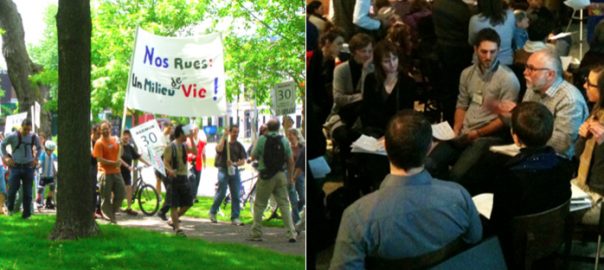

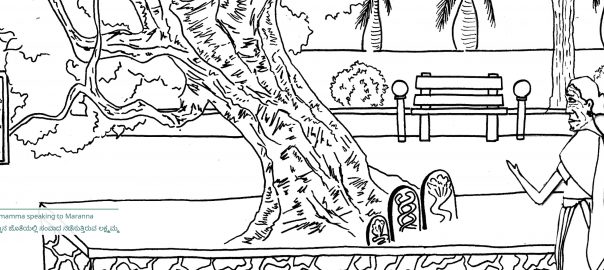


Leave a Reply